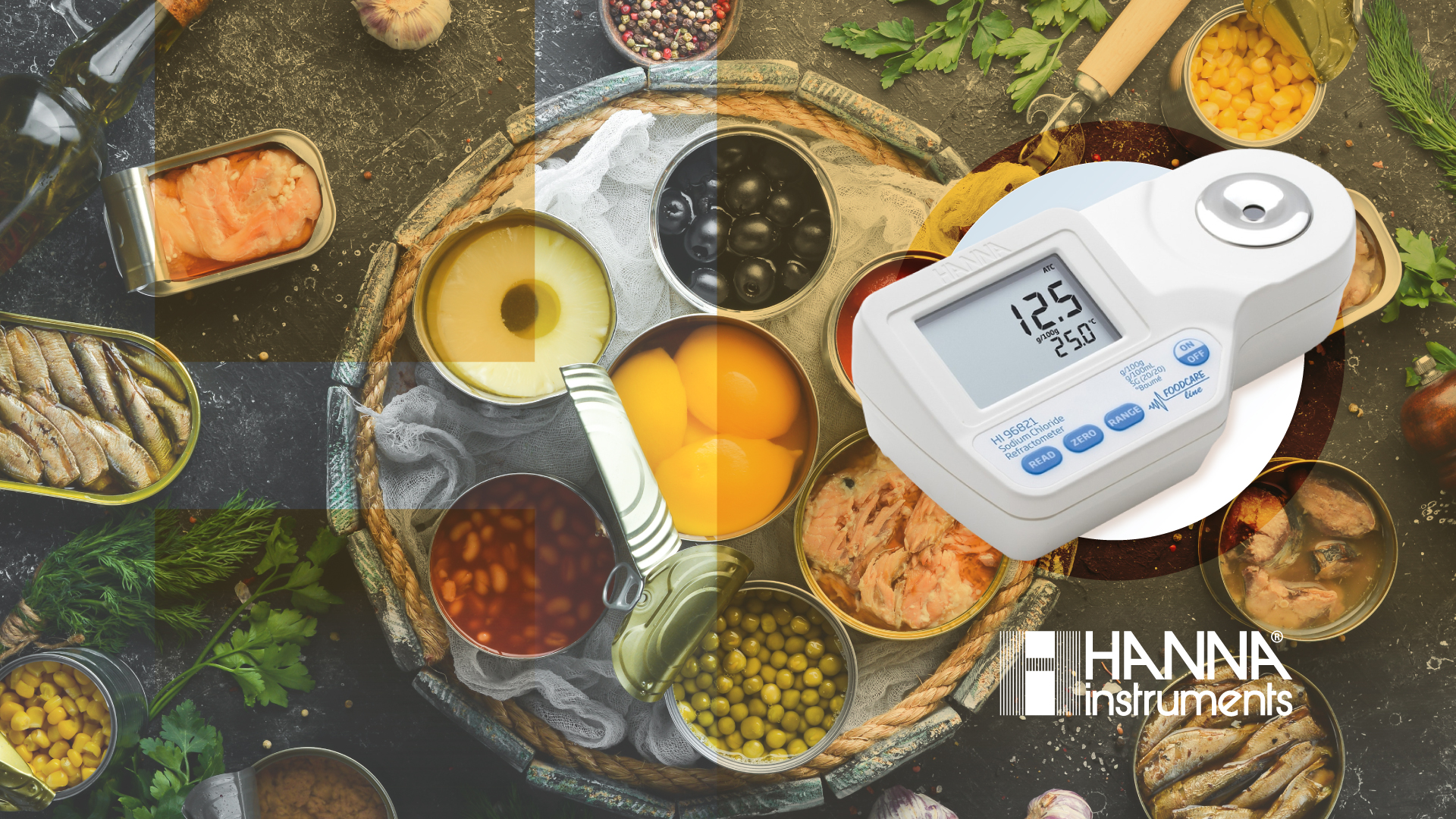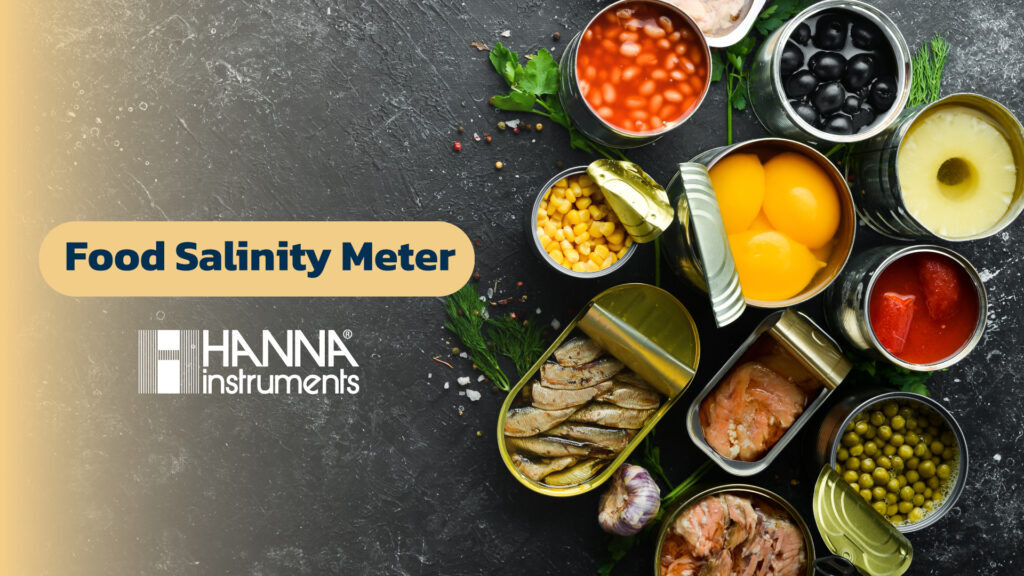No products in the cart.
Uncategorized
Food Salinity Meter I from Hanna Instruments
In the food industry, salt (NaCl) is extremely important. because it is inexpensive and can be used as a seasoning or even in food preservation, for example, salting reduces the activity of water to inhibit the growth of microorganisms that can lead to food spoilage. as well as pathogenic microorganisms High-salt foods include shrimp paste, dried shrimp, fish sauce, fermented fish, pickled fish, orange fish, fish kidney, salted crab, pickled vegetables, salted fish, soy sauce, curry paste, and so on. Excessive salt consumption, on the other hand, can cause serious health problems.
According to the Ministry of Health recommendation that the human body shouldn’t consume more than 2,400 milligrams of salt per day. Cooking by salt, fish sauce, soy sauce, soybean paste, oyster sauce, and other seasonings is included. World Health Organization (WHO) also said, 1 teaspoon of salt contains 2,000 milligrams of sodium, and adults should consume less than 5 grams (1 tea spoon) per day, or control the level of salinity in food to no more than the body’s requirements.
People always consume over 6,000 milligrams of sodium per day.
For example, consuming 3 teaspoons of salt per day in each meal and snacks, which is more than the recommended limit. If we live our lives in order to consume like this without caution, it will almost certainly have a negative impact on your health.
Did you realize that? Today, the world consumes approximately 300 million tons of salt per year in a variety of applications such as soap making, dyes, animal tanning, food storage, refrigeration, snow melting, paper bleaching, and so on. There is salt in the human body, such as blood, sweat, and tears. As a result, all living things require salt to survive. In general, when body needs salt meaning to the requirement for sodium. Because sodium has the ability to regulate the rate at which water enters and exits cells. and serves as a channel for electrical signals to travel between nerve cells. The salt in the body is responsible for assisting in the metabolization of proteins and carbohydrates, which provides energy to the body.
How to measure the level of salinity in food?
A food salinity instrument can be used to determine the level of salinity in food. Also known as a salt detector for food. to determine whether or not a food contains salt or how much sodium Exceeding the body’s daily requirements? to assist in reducing salt consumption in the diet and to be aware of the dangers of eating salty foods that will affect the body’s internal organs Because high-sodium diets are the root cause of many diseases such as cardiovascular disease, diabetes, and high blood pressure. as well as acute renal disease Thai people, in their current eating habits, tend to eat too salty.
The salinity meter in food will assist us in determining the amount of sodium in a 1 dish. Because there are numerous measurement methods. For instance, a refractometer, simply place the sample in the measuring chamber. It can immediately read the value of sodium. Another one, an ion quantification technique (ISE) just immersing the probe in the sample, the sodium salt concentration will be shown as a percentage on the display. The last one, titration techniques, the most precise and effective technique.
The value of the amount of salinity in food
The level of salinity in food is classified as follows:
- The level of salinity that is considered safe for human health. salinity is low It must contain less than 0.7 percent NaCl and have a sodium content of 275.3 mg/100 mL.
- The salinity level at neutral salinity is 0.7-0.9 percent NaCl and can be calculated back to a sodium content of 275.3-354 mg/100 ml.
- A high level of salinity It detects values greater than 0.9 percent NaCl and can be used to calculate sodium content greater than 354 mg/100 ml, which is considered dangerous and should not be consumed.
The amount of salt or sodium in the foods we eat on a regular basis varies. If you want to keep your health free of various diseases, you should eat foods that are low in sodium and keep food salinity at safe levels seasoning with less salt And eating freshly prepared food is more effective than eating dry or semi-finished food. Should choose to eat in a body-fitting manner for long-term good health. If you want to measure the salinity level in food, you can purchase a salinity meter, which can be used to easily control the salinity level.
The refractometer from Hanna offers easy quantification of salinity

“Salt is more than just giving it a salty taste.”
You might not expect, consuming too much salt can have serious consequences to your health.
Hanna Instruments (Thailand)
Leading measurement instrument maker
WITH GREAT PRODUCTS, COME GREAT RESULTS.
Email Addresses
shop@hannathaicom
CONTACT US
Line : @hannathailand
FB : HannaThailand
